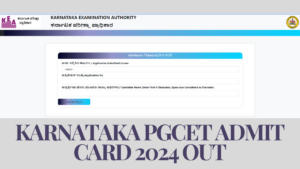Table of Contents
RTI Full Form
RTI Full-Form – Right to Information: The full form of RTI, the abbreviation, stands for Right To Information. The Right to Information Act (RTI) is an Indian law that establishes the rules and procedures for citizens’ access to information. Any citizen of India may request information from a “public authority” under the RTI Act, which is expected to respond promptly or within thirty days. The information must be delivered within 48 hours if the matter involves a petitioner’s life or liberty. Every public entity is also required by the Act to computerise their records for wide dissemination and to proactively disseminate certain categories of information so that citizens only need to make formal requests for information.
Read About: GPS Full Form
RTI Full Form in Hindi ( RTI ka Full Form )
सूचना का अधिकार अधिनियम (आरटीआई) एक भारतीय कानून है जो नागरिकों की सूचना तक पहुंच के लिये नियमों और प्रक्रियाओं को स्थापित करता है। भारत का कोई भी नागरिक सूचना का अधिकार अधिनियम के तहत एक “सार्वजनिक प्राधिकरण” से सूचना का अनुरोध कर सकता है, जिसके तुरंत या तीस दिनों के भीतर जवाब देने की उम्मीद है। यदि मामले में याचिकाकर्ता का जीवन या स्वतंत्रता शामिल है तो सूचना 48 घंटों के भीतर दी जानी चाहिए। अधिनियम द्वारा प्रत्येक सार्वजनिक संस्था को व्यापक प्रसार के लिए अपने रिकॉर्ड को कम्प्यूटरीकृत करने और कुछ श्रेणियों की सूचनाओं को सक्रिय रूप से प्रसारित करने की भी आवश्यकता है ताकि नागरिकों को केवल सूचना के लिए औपचारिक अनुरोध करने की आवश्यकता हो।
Read About: OTT Full Form
RTI Full Form: More about Right to Information
The RTI Bill was passed by India’s Parliament on June 15, 2005, and went into effect on October 12, 2005. On average, approximately 4800 RTI applications are filed each day. Over 17,500,000 applications were filed in the first ten years after the act was enacted.
Although the right to information is not listed as a fundamental right in the Indian Constitution, it preserves the Constitution’s fundamental rights to freedom of expression and speech, as well as the right to life and personal liberty. The authorities covered by the RTI Act of 2005 are referred to as public authorities.
In public agencies, the Public Information Officer or the First Appellate Authority decides on applications and appeals in a quasi-judicial capacity. This legislation was passed to strengthen the fundamental right of ‘freedom of speech’ guaranteed by the Indian constitution. RTI is an implied fundamental right because it is enshrined in Article 19 of the Indian Constitution, which guarantees freedom of speech and expression.
Read About: NGO Full Form
RTI Full Form in Biology
Scholars believe that the fundamental goal of the Right to Information Act, to make government transparent and accountable, is eroding as RTI requests are denied and bureaucratic systems are clogged with millions of requests.
Many RTIs are turned down because the filing requirements are too burdensome and legalistic for average persons. Many RTI applications to Delhi’s Information Commissioners are denied for a variety of reasons, including that they are not typed or written in English, or that they lack an index of the papers attached or a list of dates. Many citizens are forced to seek the assistance of NGOs, RTI activists, or lawyers in order to file their RTIs.
Read About: PCS Full Form
| CBSE Full Form | ICSE Full Form |
| CEO Full Form | SOP Full Form |
| AM PM Full Form | ACP Full Form |
FAQs
What exactly do you mean when you say RTI?
The Right to Information Act, or RTI, is a groundbreaking law in India that strives to increase transparency in government organisations.
What are the RTI rules?
An application can be submitted once payment has been made. According to the RTI Rules of 2012, any citizen who is below the poverty level is not required to pay an RTI fee. However, along with the application, the applicant must include a copy of the certificate issued by the competent authorities in this respect.
What is the RTI fee?
The charge for requesting information from the CPIO of Central public authorities via an RTI application is currently Rs. 10/-.
Who gave India the Right to Information Act (RTI)?
President APJ Abdul Kalam signed the national Right to Information Act 2005 on June 15, 2005. The Act went into effect on October 12, 2005.
What are the advantages of RTI?
It makes it an obligation of public authorities to keep documents accessible to the public and to publish the names of the specific officers who should provide information and in reference to the framing of rules, regulations, and other rules and regulations within 120 days.


 SOF Olympiad Exam Date 2024-25 Out, Chec...
SOF Olympiad Exam Date 2024-25 Out, Chec...
 NEET Revised Answer Key 2024 Out, Downlo...
NEET Revised Answer Key 2024 Out, Downlo...
 Karnataka PGCET Admit Card 2024 Out, Dow...
Karnataka PGCET Admit Card 2024 Out, Dow...












